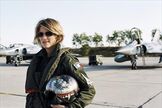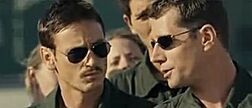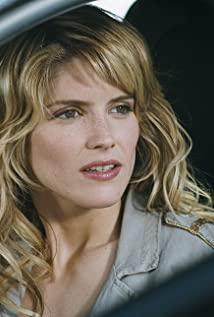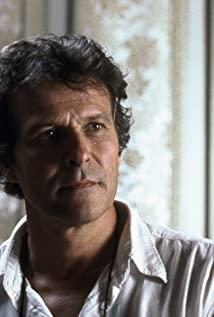In particular, the dialogue in the air, the camera cuts and selections, and the actors' performances are all very realistic. Very realistic and professional. In this film, the French fighter models, missile models, and even some details that the general audience will not pay attention to are all noted and displayed. (For example, when flying over Africa, the pilots' conversations showed a common sense of flight that the fuel consumption at low altitudes is actually far greater than at cruising altitudes. So they do not choose until the next refueling point In
comparison, so far, no film or TV series in China has shown such professionalism and sincerity in the performance of such aviation themes.
Perhaps, the story of this film is not very rigorous and perfect, but as an aerial visual feast, I personally think that this film is done very well, and it is much more professional than the military triangle love film shot by domestic CCAVs. The angle of view inside the aircraft cabin in the lens and the application of the objective lens outside the cabin can be said to be very comfortable, and there is no procrastination.
There are not many professional defects in this film, that is, it does not show the F15 and F16 mentioned in the film, and even using the Phantom 2000 to express the F15 lens is the only regret. Of course, this may also be due to the film as a publicity. The French Air Force and French Dassault films are unavoidable. (Personally, CG technology can actually be used to show the footage of F15. The French CG technology is not bad, and it is not inferior to Hollywood.)
Compared with the TOP GUN shot in the 1980s in the United States, the visual effects of the aerial combat in this film should be better, and the selection and switching of lenses provide more perspectives than the latter. Moreover, the special effects of the latter film are obviously much more than that of this film, so there are few shots in TOP GUN that fully express the various perspectives of Tom in the cockpit, most of which are fixed facial shots, and there are few other perspectives lens. You can clearly feel that the shots in the cockpit in TOP GUN were shot in a simulated cockpit, not a real shot. There are also very few shots of the cockpit display instrumentation, especially the front of the front seat has very little viewing angle and only a few shots that simulate the locked target displayed by the HUD. To put it bluntly, there are too few shots from the pilot's subjective perspective. Basically 85% are all objective perspectives, all of which are for facial shots.
Although some people will say that the performance of the love theme in TOP GUN is better than this film in terms of storyline, I have to say that the element that makes TOP GUN a classic is precisely not the element of love, but the realistic aerial combat that cannot be reproduced in Hollywood in the United States. Shooting, it is a real dogfight (close-range air combat). The effect is very strong. Now Hollywood in the United States likes to use the CG technology area for performance, but this involves the embodiment of some professional details in the air combat, unless the director or CG production staff have considerable Basic knowledge of aviation, otherwise the air combat made with CG technology is very fake and empty picture effect.
From a personal point of view, the proportion of the film spent in the air is also quite large, it can be said that it accounts for at least 50%. It looks very comfortable.
The plot can be ignored. Because this film is actually a commercial for the French Air Force and French Dassault Aviation.
View more about Sky Fighters reviews











